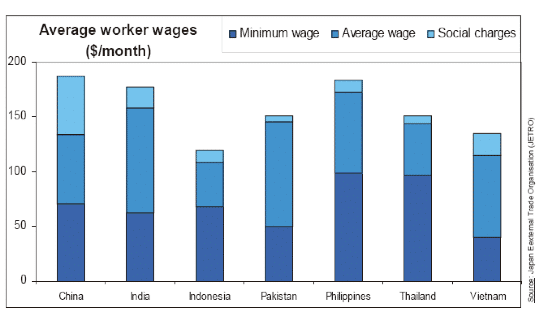Procurement has evolved from being a back-office function into a strategic driver of business success. Today, it is recognized as a key contributor to competitiveness, cost efficiency, and supply chain resilience. One of the biggest game-changers has been Low-Cost Country (LCC) sourcing, which has encouraged companies to invest in manufacturing facilities across emerging economies.
These facilities not only support exports to high-cost regions but also provide companies with an entry point to sell products and services in local low-cost markets. While cost reduction remains the primary driver of Asia-based procurement, factors such as capacity management and the need for alternative supply sources to ensure business continuity have become equally important.
However, distant supplier markets come with challenges such as quality risks, logistics constraints, and compliance issues. This is why many organizations now partner with specialized procurement service providers who offer the expertise, data, and networks needed to navigate these complexities effectively.
When companies set up manufacturing or assembly operations in LCCs, one key consideration is localization. If components are still imported from high-cost countries (such as the US, EU, or Japan), the final product may end up more expensive than those of local competitors. To remain competitive, businesses must prioritize sourcing from qualified local suppliers.
With global enterprises increasingly shifting operations to LCCs, procurement plays a pivotal role in maintaining efficiency and cost advantages. When executed with a structured and data-driven approach, China product localization and similar strategies can deliver strong results. On the other hand, without careful analysis and planning, localization can create more risks than rewards.
This is where procurement service providers make a difference—by working alongside local teams to identify, evaluate, and qualify suppliers, while also scaling procurement capacity during critical periods of transition.
Low-Cost Country Sourcing (LCCS) has become a global strategy for businesses seeking cost advantages, but it also comes with challenges. Risks related to quality assurance, logistics, intellectual property protection, and social responsibility must be managed carefully to ensure success.
The key lies in balancing strong supplier relationships with competitive pressure. Companies must think strategically about what to localize, where to source, and how to structure procurement operations for maximum value.
While some businesses see LCC sourcing as “critical” to their cost strategies, others remain cautious—unsure about which costs to shift or how to manage the organizational changes required. Many companies also hesitate due to perceived risks outside their control.

Global sourcing has become a core strategic objective for many western companies. Beyond simple cost savings, businesses are now leveraging the advanced capabilities, skilled labor, and infrastructure available in emerging economies to handle high-value activities such as manufacturing, engineering, and even research & development.
Among these markets, China remains a cornerstone of most Low-Cost Country (LCC) sourcing strategies. For many organizations, establishing a physical presence in China is considered essential to achieving long-term procurement and supply chain success.
To fully capitalize on these opportunities, companies are increasingly turning to experienced procurement service providers. These partners help design and execute structured global sourcing strategies, support product localization initiatives, and accelerate time-to-benefit realization—ensuring businesses achieve both cost savings and sustainable growth in competitive markets.
copyright@2025 esourcingsolutionllc All rights reserved.